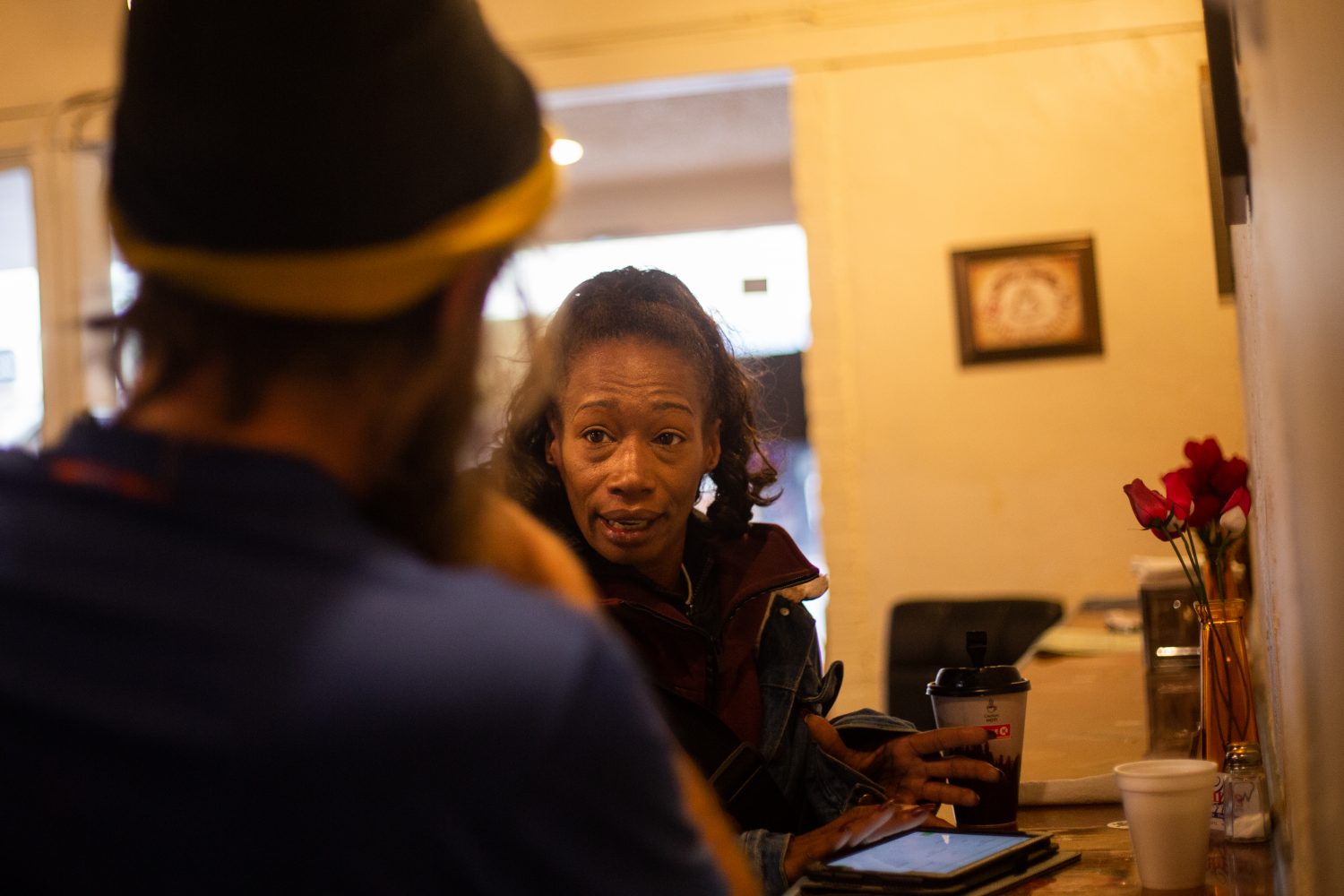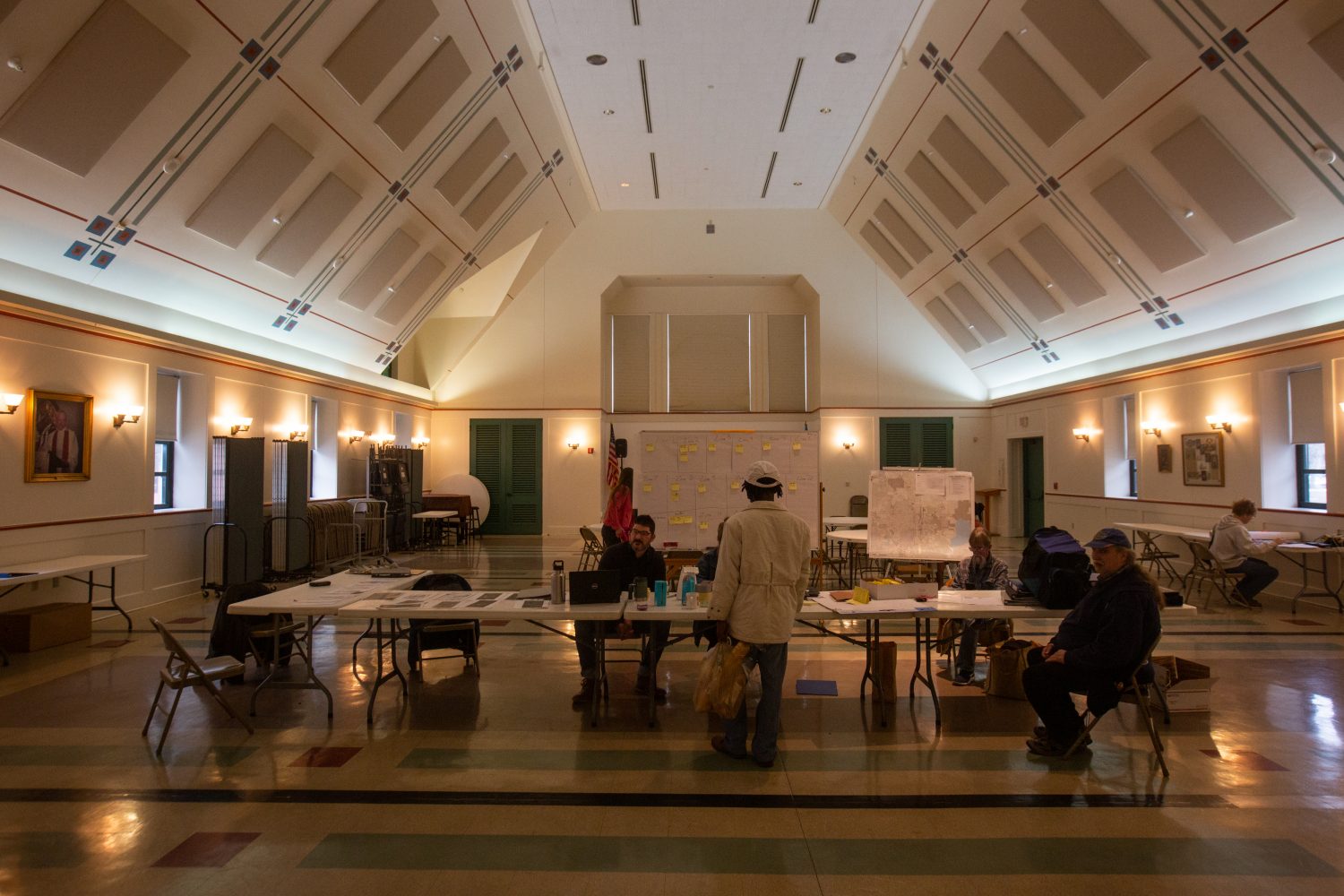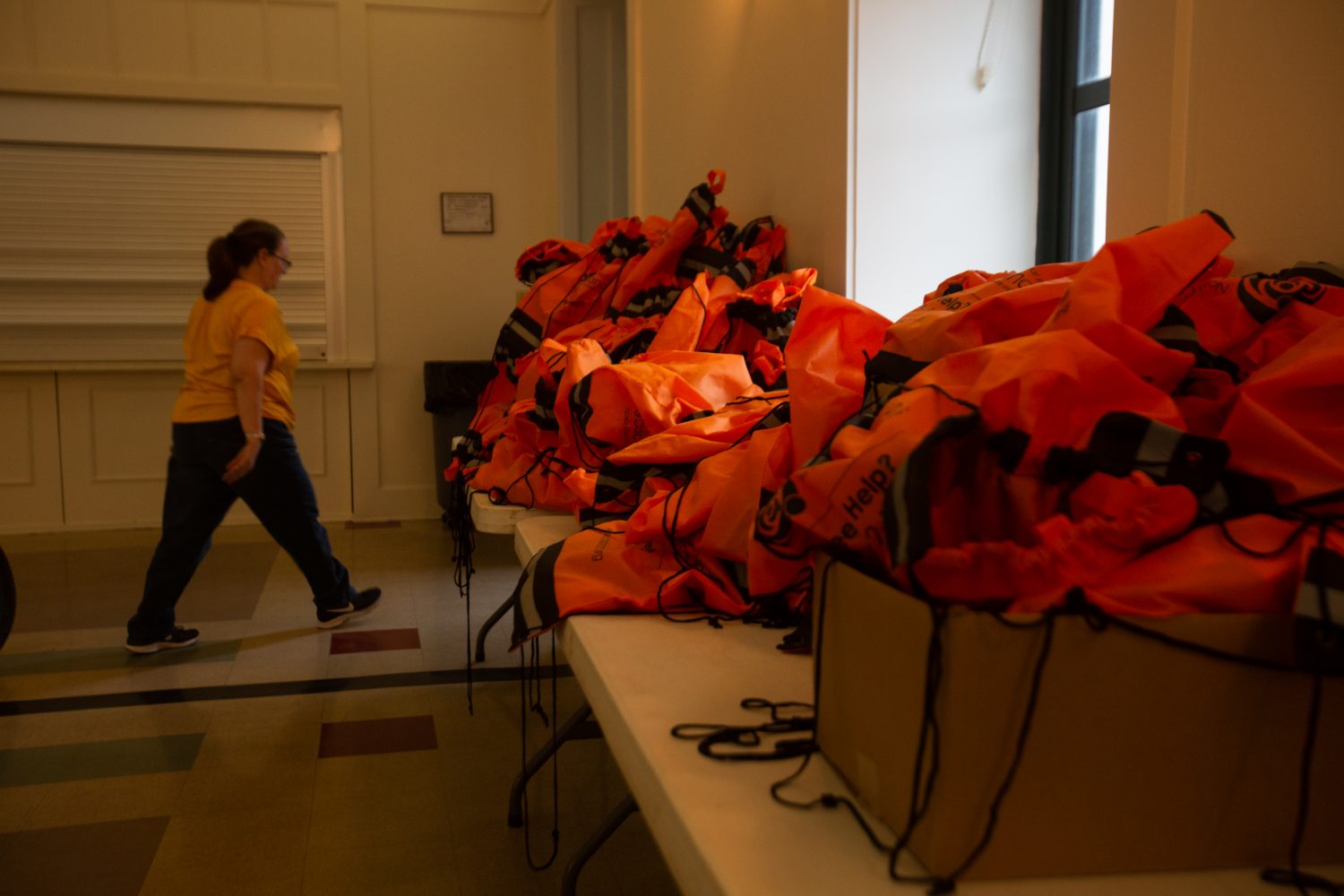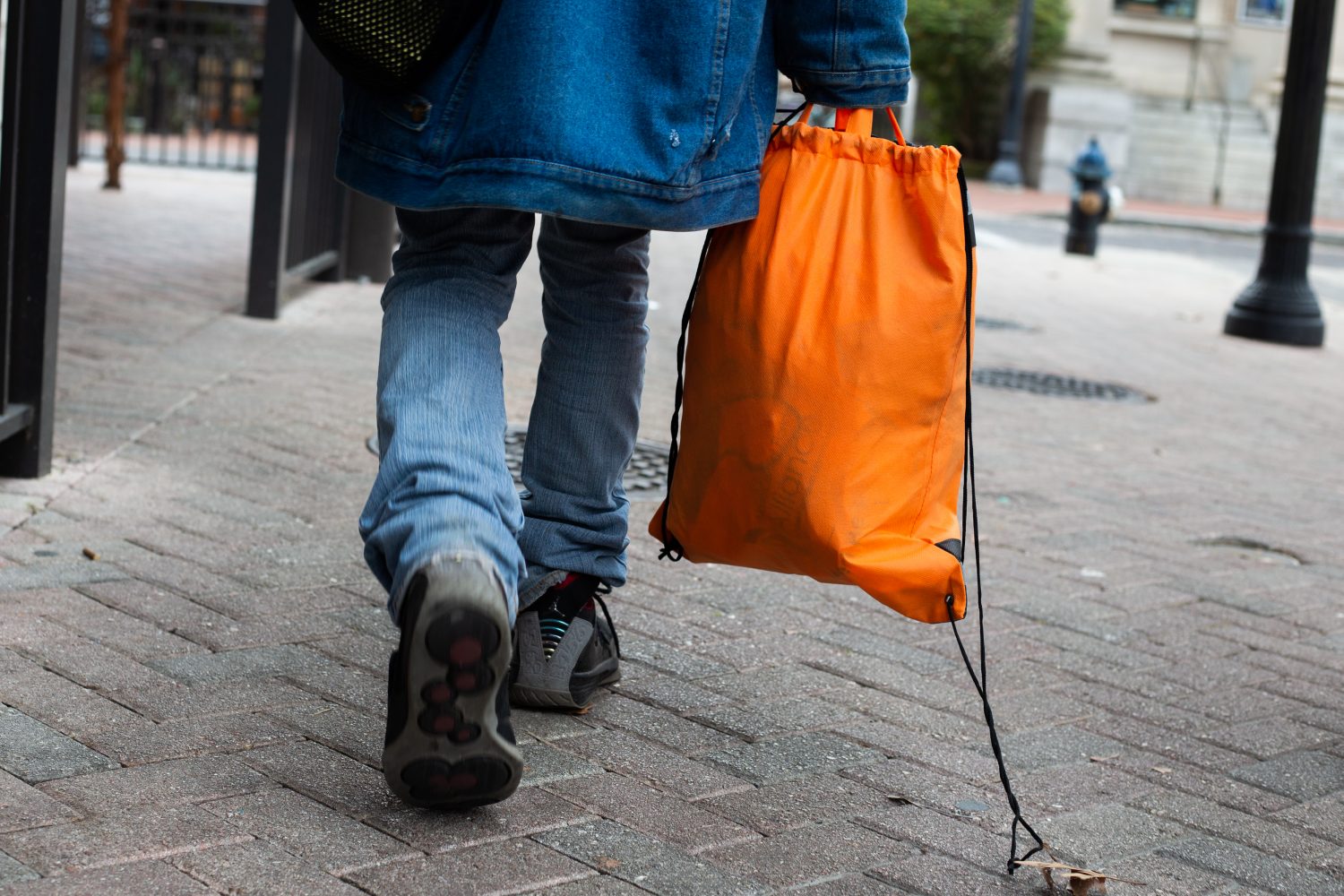Gainesville begins dismantling an encampment that had become a ‘broken piece’ in a system of care.
When a homeless encampment is shut down, one woman fights to find home.
The people who call Dignity Village home share their stories.
In one Florida city, strict policing pushes homeless population out.


A Homeless Woman Helps Make Sure Others Don’t Stay Invisible
By Stephanie CornwellOn an unusually cold January day in north-central Florida, Tiffny Burton finds herself navigating life without a car, a job or a home. She woke up this morning, as she has done every morning for the past month, at a Gainesville homeless shelter. But her spirits remain undaunted.
Dressed in light-washed skinny jeans and a faux fur-lined denim jacket, Tiffny constantly reminds herself: “You gotta stay positive, no matter what situation you’re in. Otherwise you’ll just be mad and homeless. That’s not a good combination.”
She’s neatly slicked her hair back in a high ponytail, matted her cheeks with blush and glued talon-like maroon acrylic nails on her fingers. She’s ready to work, to go help the city and county get a better sense of people like her. People who have no place to call home.
She is one of the volunteers helping out in the annual Point-in-Time count of the homeless population in Alachua County run by United Way of North Central Florida. Starting at sunrise, they collect their tablets and paper surveys, and neon drawstring bags containing toiletries, socks and snacks, and walk around Gainesville to assess the needs of displaced people. Among the team are 23 volunteers who are also homeless, like Tiffny. The idea is that homeless people know better than anyone where other homeless people are camping out, and it’s an opportunity for them to earn some money.

It means a lot of walking, from street to street, at shelters, under bridges, down congested highways and through dilapidated woods. Tiffny has been on her feet a lot lately after her divorce got messy and she fell on hard times. Then, her Jeep Commander was impounded. But she can laugh about it: “I’m gonna have the sexiest legs in Gainesville.”
She looks both ways at the intersection of 1st Street and University Avenue, one of the city’s major east-west arteries, and eyes Big Lou’s NY Style Pizzeria. This landmark eatery tells her she’s nearing the St. Francis House shelter, where she is certain to find homeless people on the sidewalk. She has a litany of questions for them:
Are you currently displaced or experiencing homelessness? Where did you sleep last night? Do you know anyone that’s displaced or have you experienced homelessness in the last year?
Tiffny records their responses for the count, required annually by the U.S. Department of Housing and Urban Development. It’s a way to measure the scope of the problem.
Last year, the census counted 804 homeless people in Alachua County — about 6% higher than the year before.
Last year the census counted 804 homeless people in Alachua County, about 6% higher than the year before. Ironically, the head of United Way of North Central Florida, the organization running the count, attributed the increase to more precise counting methods. Part of it is thanks to their homeless volunteers, a recently adopted practice.
“Hey sir, have you took a survey today?” Tiffny asks a group of men at the downtown shelter.
She naturally charms everyone and is equally polite. She tries to butter them up so that they’ll talk to her. She also doesn’t want to be cursed at.
One man holds up a goodie bag, letting her know that he’s already been counted.
“Ok, well you have a great day!” Tiffny says.
A block over, a man hollers that he’s already taken a survey. “Well mine’s better,” she retorts.

She’s met plenty of people who, like her, fell into homelessness after a drastic change in their lives. One woman was diagnosed with cancer and was forced to choose between her medication and her apartment rent.
She thinks most people don’t know much about the homeless; that they are scared of them.
“They put you in a category of, like either you wanna be there or you done something wrong,” Tiffny says. “But it could be anything, like an illness, a job or car loss. It can happen to anyone.”
She’s seen people get overshadowed by the hustle and bustle of everything and learned first-hand that if you don’t tell someone about your situation then they cannot help. She was raised to handle her problems and developed a fierce dose of pride. But pride no longer has a place in her life.
“Like, we are on the street, it’s kinda hard not to tell anybody,” she says.
She’s determined not to remain in her current situation for longer than necessary. She’s seen how life at a shelter can become normalized, but she wants to work.
“Anything can happen,” she says. “If you’ve never been homeless or don’t wanna tell people what’s going on, you end up staying there longer than you need.”
Tiffny has four kids: three girls who are 21, 9 and 5 and a boy, who is only 2. “I was hoping for a cat; I didn’t want any more girls,” she laughs.
Her oldest daughter, who now has a cat, Luna, lives in San Antonio, Texas, where Tiffny grew up and met her ex-husband. Tiffny’s other three kids are in foster care here in Gainesville.
Foster care sounds wretched on the surface, but it has given Tiffny the space to get her life on track.
“Sometimes people think it’s a bad thing, but sometimes it’s not,” she says. “It would be worse running around with them homeless.”
Her kids, she says, are smart and independent. They have deep discussions on topics like the impact of the Vikings on American culture. Tiffny believes her kids understand their predicament is not mommy’s fault. Ultimately, she, like any other mother, wants to be a positive role model for her kids.
“I really don’t wanna make any mistakes anymore,” she says.
She’s set goals for herself: get a car, then save for an apartment. She sees herself going back to school for respiratory therapy because the benefits are good. Or maybe she will restart the cleaning business she ran for two years, Extreme Wonder Clean.
One thing that’s high on her list to purchase is a bidet toilet seat. She found a $20 attachment on Amazon.
They put you in a category of, like either you wanna’ be there or you done something wrong. But it could be anything, like an illness, a job or car loss. It can happen to anyone.— Tiffny Burton

Halfway through the day, Tiffny gets a break to visit her kids, as she does once a week. She drops the leftover goodie bags at the Holy Trinity Episcopal Church, the headquarters of the homeless count. She hops on a bus to Goodwill and buys new coats and shoes for her kids. It’s getting cold out.
“I’m gonna write a book one day about my life,” she says. “It’ll be a drama and thriller all at once.”
Maybe it will be called “Sexy Legs,” or “First the Car, Then the Bidet.”
“You’ll be laughing and crying, but that’s life,” she says.
But for now, she just has to get through the day. More heads to count. More survey questions to ask. She takes out a small container of super glue and starts to re-apply one of the $4.99 maroon nails from Walmart. A woman has got to look good.
Explore more chapters
 Special Report from WUFT News
Special Report from WUFT News